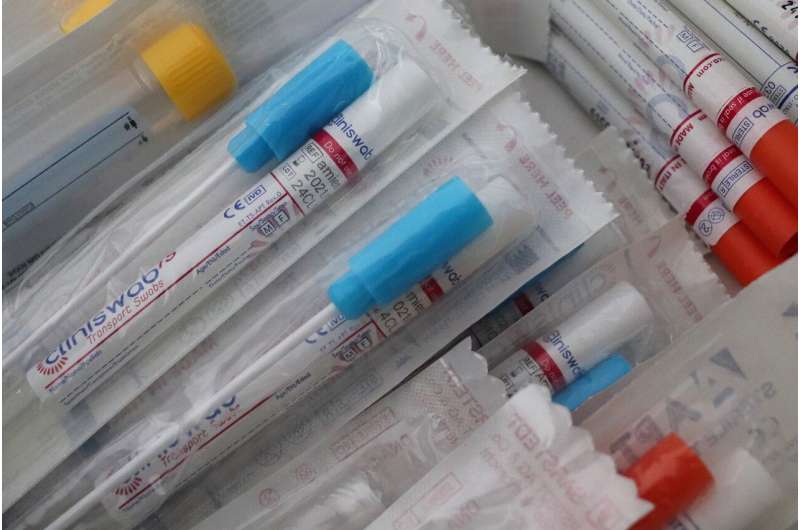

Today, Cochrane, a global independent network that gathers and summarizes the best evidence from research to help informed health decision-making, publishes an updated systematic review assessing rapid tests for the detection of SARS-CoV-2 infection (COVID-19). The review shows that rapid antigen tests are better at correctly identifying cases of COVID-19 in people with symptoms than in people without symptoms. There are large differences in the accuracy of different brands of test, with very few meeting the World Health Organization (WHO) minimum acceptable performance standards.
During the COVID-19 pandemic, swift diagnosis of people who are infected with SARS-CoV-2 is important. Then decisions can be made quickly about treating people who are infected, and other measures such as isolation and contact tracing can start. Tests have been developed for diagnosing COVID-19 that can provide results ‘while you wait’. Two types of rapid ‘point of care’ tests are available, both of which use nose or throat samples. Antigen tests identify proteins on the virus and come in disposable plastic cassettes similar to pregnancy tests, with results available within 30 minutes. Molecular tests detect the virus’s genetic material, using desktop analysers or small handheld devices with results typically available in 30 minutes to 2 hours.
The Cochrane researchers wanted to know how accurate these tests are in determining infection in people with symptoms and in people without symptoms. They identified and summarized studies that measured the accuracy of any point-of-care tests used in hospitals or the community compared with the accepted standard laboratory test, RT-PCR, to detect current SARS-CoV-2 infection.
The first version of this review included 22 studies and was published in August 2020. The updated review now includes evidence from 64 studies. Most of the studies included in the review were from Europe and USA and assessed the accuracy of rapid antigen tests. Only three studies were exclusively in people without symptoms—two in people who were contacts of confirmed cases and one involved staff screening. Over half of the antigen test studies included samples from people being tested in the community, for example at test centers, emergency departments, or as part of contact tracing or outbreak investigations. Molecular test studies were mainly done in laboratories and not in the community where the tests were intended to be used.
The review authors found antigen tests were better at identifying COVID-19 in people with symptoms than they were in people without symptoms. In people with symptoms, on average 72% of people who had COVID-19 were correctly identified as being infected; tests performed best in the first week after symptoms began when they identified 78% of people who had COVID-19. In people without symptoms, on average, the antigen tests correctly identified 58% of those who were infected. Antigen tests correctly ruled out infection in 99.5% of uninfected people with COVID-19-like symptoms and 98.9% of uninfected people without symptoms.
The percentage of people with COVID-19 who were correctly identified varied between brands and also depended on whether manufacturers’ instructions for using the tests were followed. For people with symptoms of COVID-19, correct identification across test brands ranged from 34% (Coris Bioconcept assay), to 58% (Innova assay), and up to 88% (SD Biosensor STANDARD Q assay) of infected people. The WHO have established performance standards for tests that identify infection in people with symptoms. To meet these standards, a test must be able to correctly identify at least 80% of people with infection and correctly exclude infection in 97% of people who are not infected.
To illustrate their results the researchers looked at the effect of two of the better performing brands of test (Abbott Panbio and SD Biosensor STANDARD Q ) in people with symptoms (75% to 88% of COVID-19 cases correctly identified) and in people who did not have symptoms (49% to 69% of COVID-19 cases correctly identified).
In a population of 1000 people with symptoms where there are 50 people with COVID-19, we would expect that about 40 people would be correctly identified as having COVID-19 by rapid tests, and between 6 and 12 cases of COVID-19 would be missed. Between 5 and 9 positive test results would turn out to be false positives.
The true number of cases of COVID-19 is likely to be lower in mass testing of people without symptoms. In a population of 10,000 people with no symptoms, where 50 people really had COVID-19, between 24 and 35 people would be correctly identified as having COVID-19, and between 15 and 26 cases would be missed. We would expect the tests to return between 125 and 213 positive results and between 90 and 189 of those positive results would be false positives.
Dr. Jac Dinnes, Senior Researcher in Public Health, Epidemiology and Biostatistics at the University of Birmingham, an author of the review said: “Our review shows that some antigen tests may be useful in healthcare settings where COVID-19 is suspected in people with symptoms. These tests do not appear to perform as well in people who don’t have symptoms of COVID-19. Confirming a positive result from a rapid test with a RT-PCR test, particularly where cases of COVID-19 are low, may help avoid unnecessary quarantine. All antigen tests will miss some people with infection, so it is important to inform people who receive a negative test result that they may still be infected.
There is some emerging evidence that the accuracy of the test is affected by who is doing it. Future studies should look at the relationship between the experience of the person administering the test and the sensitivity of the test. Future research should also evaluate molecular tests in the settings in which they are intended to be used to clarify their performance in practice.”
Source: Read Full Article